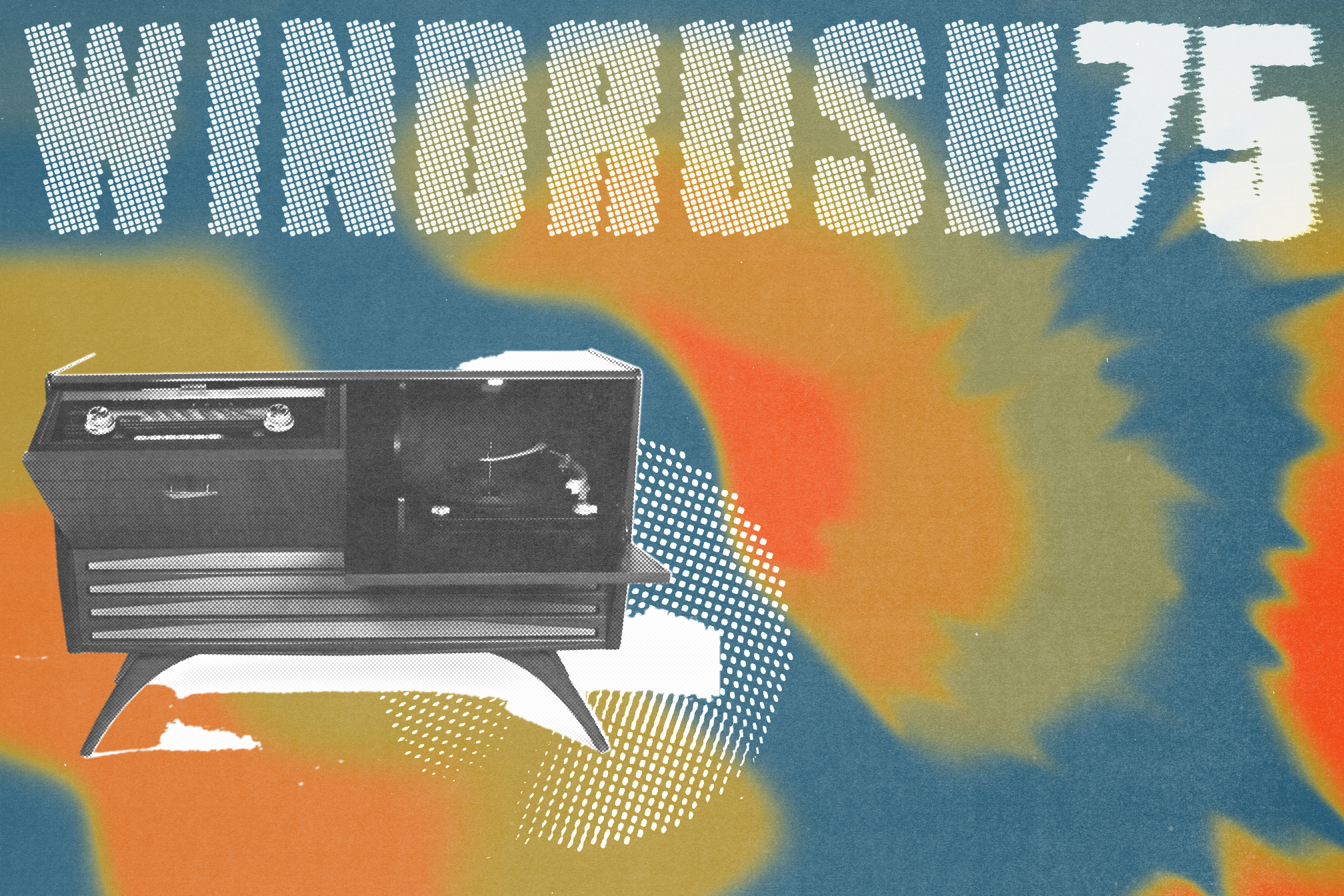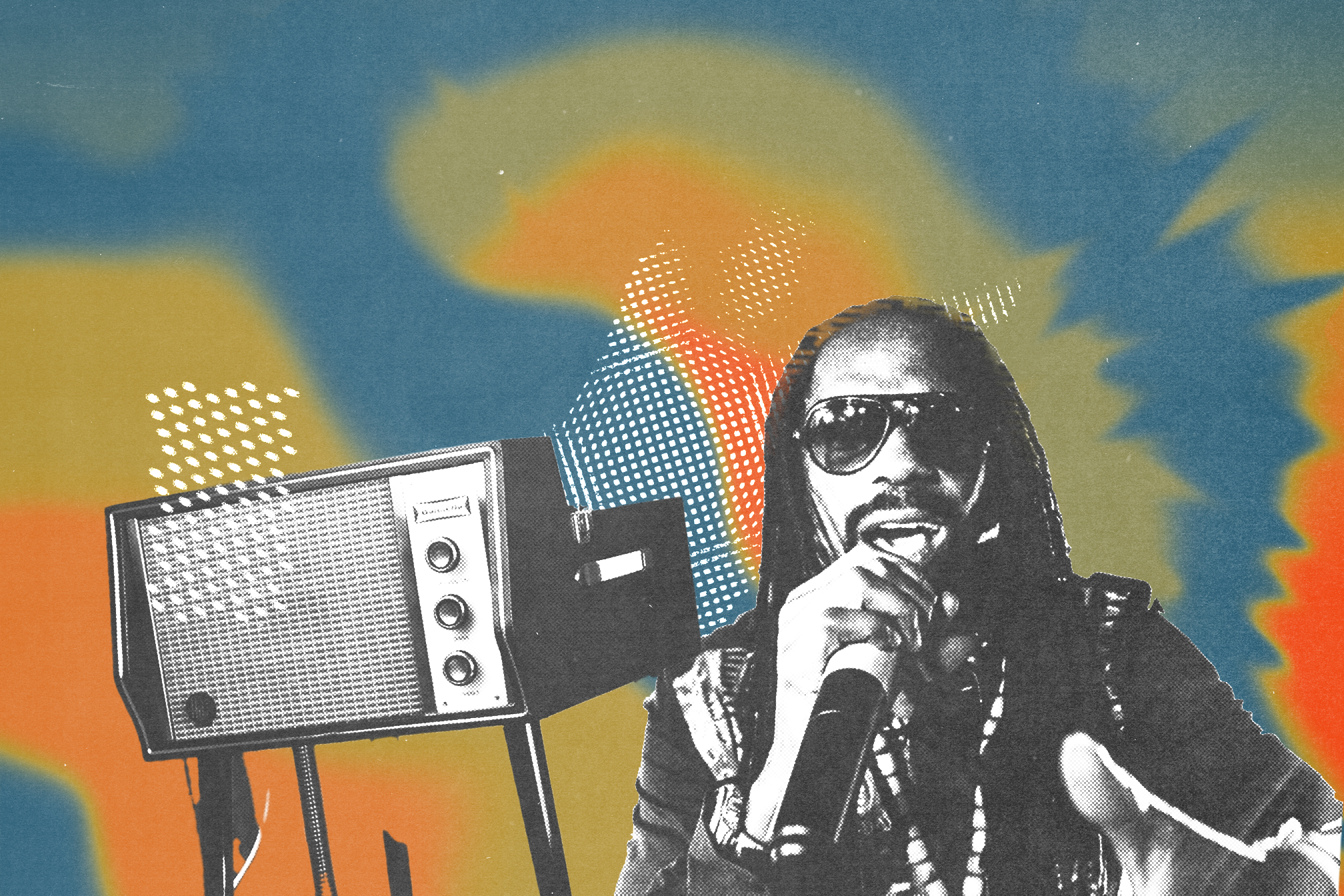 Features
Features
Why the radiogram is a sacred piece of music technology
Kieran Yates pays tribute to the radiogram's role in soundtracking diaspora living rooms, inspiring collective joy and the evolution of music
Mixmag is running an editorial series to mark the 75th anniversary of Windrush, find out more here
In my grandparents living room, there was something positioned pride of place that the rest of the house orbited around: a brown Grundig radiogram. A revolutionary piece of technology that allowed you to play the AM and FM radio as well as your vinyl records (sometimes one after another on a multi-changer) this wooden cabinet – to the untrained eye – facilitated the songs that so many migrant communities brought with them.
While my family, part of the Punjabi diaspora, played records and listened to radio news updates, it was the sharing network of the West Indian community, namely the Windrush generation. who really used the technology to spread and curate the sound of Black music in the UK. If you heard Janet Kay records, Ebony rockers or Lord Shorty, during the '70s, it was likely out of a West Indian living room, thanks to the radiogram.
The earliest models that we might recognise date back to the 1930s. Nicknamed the ‘blue spot’ or simply just the ‘gram, it joined together a vinyl record player, speakers, and radio in a wooden veneer cabinet. After the Second World War, looking for entertainment to lift spirits, it became fashionable in middle class people’s homes to have a radio all-in-one, where a model would cost the average household the equivalent of three weeks salary.
Read this next: Welcome to Mixmag's Windrush 75 series
Bob Amos is the founder of Tutti Audio and sells and restores vintage models, a love born from listening to his dad play classical records on his own radiogram at home, and then working at the now defunct electronic store Rumbelows where he saw models from manufacturers Braun, Blaupunkt, and Dynatron amongst countless others.
“Early models were large shiny walnut cabinets with large loudspeakers in them,” he says. “After the Second World War, they got larger and bulkier. Then, in the '50s, where FM and AM radio was developed, it boosted the popularity. By the time stereo sound was implemented around 1958, it really started to gain traction across the '60s.”
The 1960s signalled the arrival of the Black Box model, which moved the aesthetic into a long sideboard, thanks to the arrival of stereo sound in the late 1950s. The design, which we might now call mid-century modern, allowed two speakers to project through the length of the radiogram, rather than in a single speaker. This facilitated sound that held the room, and answered a simple question: how do you turn the living room into a dance space that invites bodies to move in unison?: Fire up the ‘gram.

While technology has always moved people to dance, it was the racist door policies of many clubs that advanced the culture of house parties in immigrant communities across the UK. In Southampton, blues parties became famous on Derby Road, in Brixton, ‘rub-a-dub’ dancing to lovers rock and reggae left marks on walls (from indigo dye or belt scrapes) as radiograms housed records from Jamaica and across the Caribbean to be played and swayed along to. Its presence allowed music to be shared and established the living room as a site of protection, joy, and physical release.
That the radiogram imprinted musical memory into Nine Nights, wedding parties and singalongs to Greg Edward’s Soul Spectrum on Capital Radio, or Tony Williams on Rockers FM, can literally, be seen years later. I ask Bob, tasked with restoration, whether the parties reveal themselves in the wine rings on the wood and he sighs: “Yes”.
Read this next: The Lab LDN Windrush 75 special
Its legacy is archived with tenderness. It is not by accident that in Macmillan’s installation of a West Indian living room in London’s Museum of the Home, alongside records of Jim Reeves and glassware filled cabinets, the radiogram is pride of place.
Writing in the acclaimed photographer Michael Macmillan’s book, The Front Room: Diaspora Migrant Aesthetics in the Home, celebrated cultural theorist Stuart Hall observes that “the radiogram occupied a space like a religious object. It was sanctified...and subversive…carrying a different message about home…and making a life in this rather inhospitable climate.”
I chat to a legend of soundsystem culture, General Levy, who traces his influences back to this technology, and over the phone he is filled with joyful nostalgia as he’s transported to being around five-years-old. “Yes! We had one!” I can hear his smile. “It was an original ‘gram from back in the day, brown with gold trim around it, and it had cream ivory buttons and knobs. We used to play our 7-inch records on it one after another [his was a multichanger model]. It was a legend in our house!”
“It was important,” he stresses. “Me and my brother would have to entertain the elders on a Sunday while they were eating and talking and playing dominoes, and my older brother, Winston would be a DJ. He’d play Michael Jackson, 'Run Run' by Studio One, 'Kung Fu Fighting' by Carl Douglas. My mum would shout out, ‘play this tune, play that tune deh!’ It brought the community together”.
Read this next: Why dance music culture needs to pay more respect to MCs
Today, there is a renewed market for the technology. Mid-century style polished walnut is back in style, but mostly, there is a desire to connect with this analogue technology rooted in migrant diaspora histories in a digital world. Amos notes that there is a market for restoration, where repair can set you back hundreds of pounds. In the upcoming series of the BBC’s prime-time show The Repair Shop, a radiogram will feature.
Perhaps the most poetic part of what happened to many radiograms is precisely what can make them difficult to restore. In the late 1970s, much of the radiogram valve circuitry was dismantled and pillaged by a new school of music heads, and used to build soundsystem amps. Building a soundsystem by excavating the past is part of a circular music economy that took the heavy bass of jungle, ragga and bashment outside living rooms into streets and parties that pulsed through tarmac roads and saw drinks fly in the air without staining the carpet. There’s no soundsystem without the radiogram, no record swapping without the Windrush generation who shared songs we still dance to with us. While the tech helped spread the word, there’s no getting away from the universal truth, summed up by the legendary General Levy: “We bought the tunes dem”.
Kieran Yates is a freelance writer, follow her on Twitter



